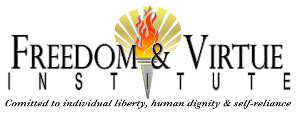As students begin returning to formal learning after their Christmas break, the debate continues about whether schooling should be online, in-person, or some mixture of the two. Different people prefer different approaches, and there’s no reason this diversity cannot be accommodated. The experience of 2020 highlighted the value of educational freedom, which should continue to expand this year and beyond.
American parents and students have always been a diverse lot. They have been wealthy bluebloods, middle-class bourgeoisie, and impoverished immigrants. They have been Asian, Hispanic, and African American. They have been Protestant, Catholic, Jewish, and agnostic. They have been rural Texans, suburban Californians, and urban New Yorkers. They have been people of widely varying backgrounds and aspirations, for whom different kinds and levels of academic training were desirable and appropriate.
The record of the American education system in meeting the diverse needs of this diverse clientele has been mixed. In the early days of the nation, those who had the means to pay enjoyed a variety of educational options, from boarding schools to private tutors. The rise of the public school (funded by taxpayers) provided greater opportunity for children of poor parents, but it also permitted unitary control by ideologues at the local, state, and national levels, giving rise to increasing uniformity at the expense of the preferences of parents. Minority students of all kinds—learning-style minorities; vocational minorities; racial minorities, religious minorities—found themselves at the mercy of majority or elite opinion.
 This problem has been countered, more or less successfully at various times and places, by the development of alternative schooling options. Religious schools, homeschooling, and charter schools are among the options that have preserved a modicum of freedom within American education. But these and other alternatives have often struggled to find a level playing field, as the legal environment has ranged from favoring public schools (by providing full taxpayer funding) to actively discouraging nonpublic options (by, for example, burdening homeschooling with red tape or strictly limiting charter school numbers).
This problem has been countered, more or less successfully at various times and places, by the development of alternative schooling options. Religious schools, homeschooling, and charter schools are among the options that have preserved a modicum of freedom within American education. But these and other alternatives have often struggled to find a level playing field, as the legal environment has ranged from favoring public schools (by providing full taxpayer funding) to actively discouraging nonpublic options (by, for example, burdening homeschooling with red tape or strictly limiting charter school numbers).
Despite continuous efforts to make education monochromatic, freedom keeps breaking out, as it did in 2020. In many locales, public schools were closed to in-person learning while private schools remained open. Parents voted with their feet, and in places such as Massachusetts, Catholic schools enjoyed an enrollment boom. All across the country, where in-person options were not available or preferred, parents created “pods” or “micro-schools” as a way to make virtual learning more effective and efficient. Many parents opted to pull out of institutional schooling altogether and transfer their children into homeschooling.
The educational upheaval caused by COVID-19 has had a detrimental effect on many students and teachers. But it has also revealed a pluralism that had been to some extent suppressed by the dominance of public schooling. Parents have differing expectations for what education can and should accomplish. They have varying views of academic excellence, of the priority and value of extracurricular activities, and of what is most important about the physical environment (including differing levels of disease-risk tolerance). Students have different learning styles, affinities, and interests. Forcing all of these constituencies into a single mold, the character of which is dictated from above—sometimes far above—was never a good idea. Given the right to make choices, parents and students will surely make mistakes. Educational freedom will have its drawbacks. A world in which all schools are perfect and all students reach their full intellectual potential is a utopian dream. But freedom is better than the alternative. As Walter Williams said with respect to the benefits of choice in education, “Any government-created and -protected monopoly is harmful to the best interests of consumers. Competition always produces a superior and lower-cost product than government monopolies.”
Educational freedom empowers parents, improves schools, and benefits students. May we have more of it in 2021.


